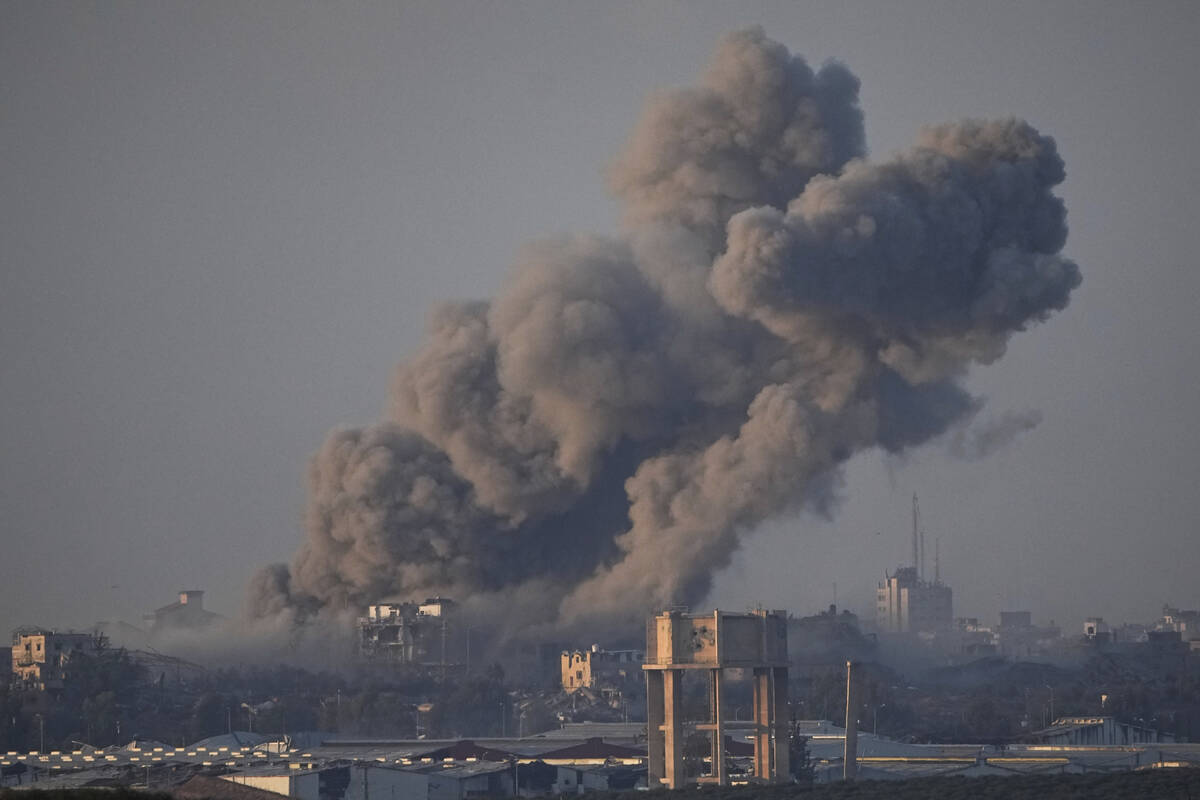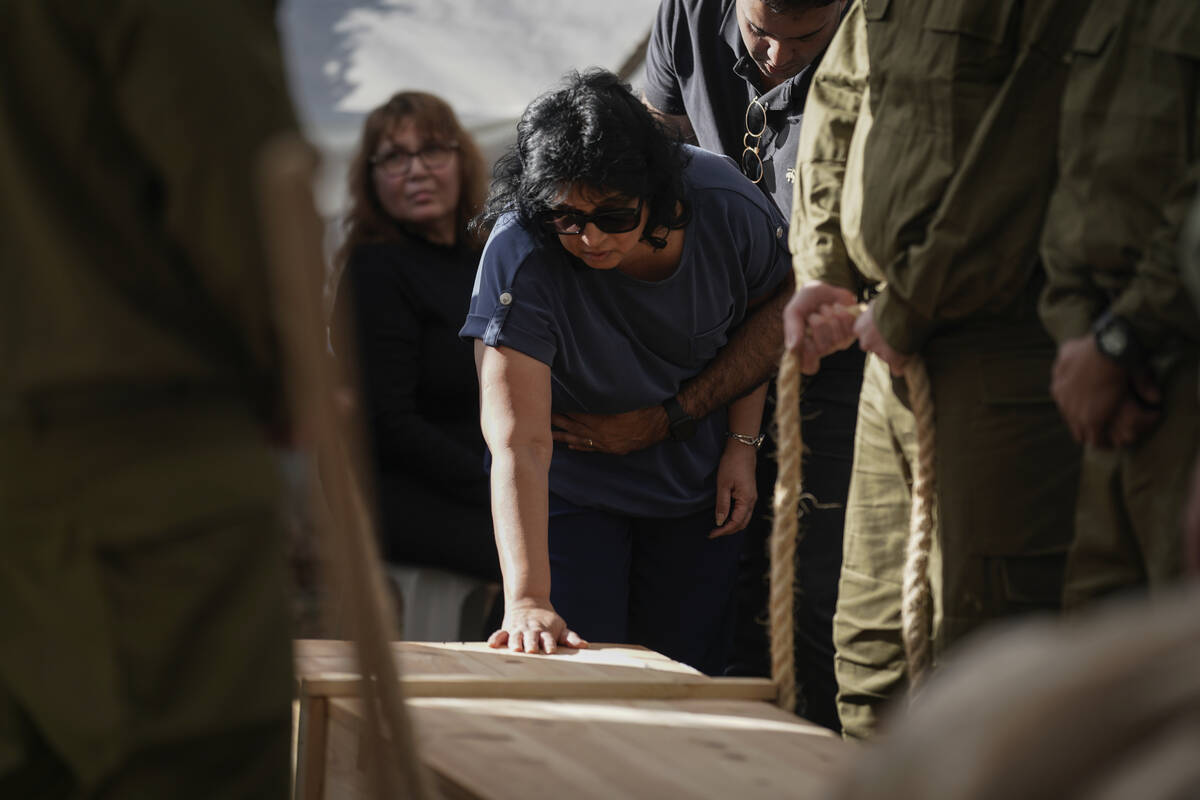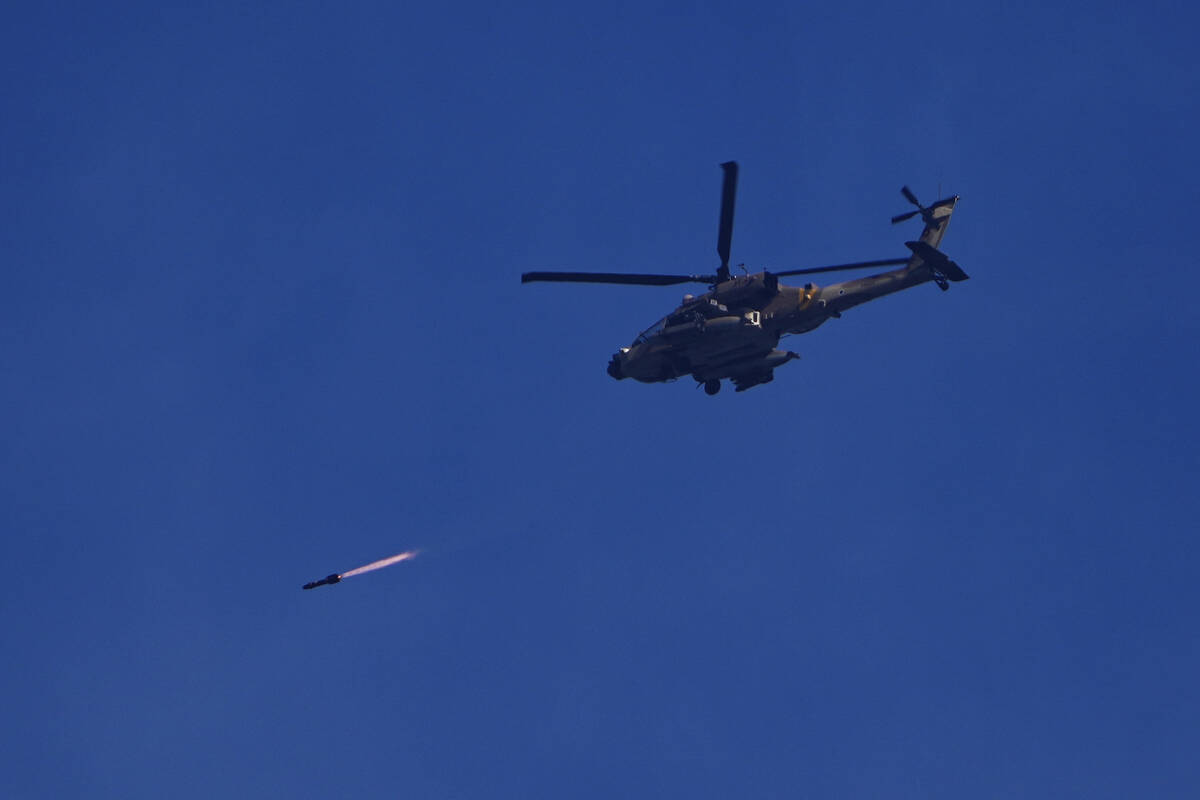Intense fighting goes on as Israeli forces battle Hamas
RAFAH, Gaza Strip — Israeli troops battled Hamas terrorists Wednesday in the center of the Gaza Strip’s second-largest city, the military said.
Two months into the war, Israel’s offensive into southern Gaza was bringing to Khan Younis the same fierce urban fighting and intensified bombardment that obliterated much of Gaza City and the north of the territory in past weeks.
Ahead of the assault, Israel urged residents to evacuate from Khan Younis, the childhood home of two top Hamas leaders.
Israel has vowed to fight on, saying it can no longer accept a Hamas military presence in Gaza after the Oct. 7 surprise terrorist attack that triggered the war. Hamas and other terrorists killed about 1,200 people, mostly civilians, and took captive some 240 men, women and children in that attack.
An estimated 138 hostages remain in Gaza after more than 100 were freed during a cease-fire last week. Their plight, and accounts of widespread rape and other atrocities committed during the terrorist rampage, have deepened Israel’s outrage and further galvanized support for the war.
The refugee camp within Khan Younis was the childhood home of Hamas’ top leader in Gaza, Yehya Sinwar, and the group’s military chief, Mohammed Deif, as well as other Hamas leaders — giving it major symbolic importance in Israel’s offensive.
Hamas leader ‘not above ground’
Israeli military spokesman Daniel Hagari said Sinwar is “not above ground, he is underground,” but would not elaborate on where Israel believes him to be. “Our job is to find Sinwar and kill him.”
The military said its special forces at Khan Younis had broken through defense lines of Hamas terrorists and were assaulting their positions in the city center. It said warplanes destroyed tunnel shafts, and troops seized a Hamas outpost as well as several weapons caches.
Video released by the military showed commandos and troops moving amid sounds of gunfire down city streets strewn with wreckage and buildings with giant holes punched into them. Some took positions behind an earthen berm, while others inside a home fired out through a window, its flowered curtains fluttering around them.
Hagari said heavy fighting was also continuing in the north, in the Jabaliya refugee camp and the district of Shujaiya.
Hamas posted video it said showed its fighters in Shujaiya moving through narrow alleys and wrecked buildings and opening fire with rocket-propelled grenades on Israel armored vehicles. Several of the vehicles are shown bursting into flames.
Hamas’ continuing ability to fight in areas where Israel entered with overwhelming force weeks ago signals that eradicating the group while avoiding further mass casualties and displacement — as Israel’s top ally, the U.S., has requested — could prove elusive.
Two months of Israeli bombardment and retaliatory ground assaults have killed more than 16,200 people in Gaza, the territory’s Health Ministry said late Tuesday.
The ministry does not differentiate between civilian and combatant deaths. Its overall tally tracks with a figure released this week by the Israeli military, which said about 5,000 of the dead were terrorists.
Israel accuses Hamas, which has ruled Gaza for 16 years, of using civilians as human shields when the terrorists operate in residential areas and blames that for the high civilian death toll.
The Israeli military says 88 of its soldiers have been killed in the Gaza ground offensive.
Thousands flee to Rafah
The U.N. said tens of thousands of people have fled from Khan Younis and other areas to Rafah, on Gaza’s southern border with Egypt.
On the other side of the border, Egypt has deployed thousands of troops and erected earthen barriers to prevent any mass influx of refugees.
It says an influx would undermine its decades-old peace treaty with Israel, and it doubts Israel will let them back into Gaza.
Gaza has been without electricity since the first week of the war. The U.N. also said that all telecom services have been shut down due to cuts in the main fiber routes.
For the past three days, aid groups have only been able to distribute supplies in and around Rafah — and mainly just flour and water, the U.N.’s humanitarian aid office said. Access further north has been cut off by fighting and road closures by Israeli forces.
The World Food Program said that the renewed fighting “will only intensify the catastrophic hunger crisis that already threatens to overwhelm the civilian population.”
———
Jeffery and Keath reported from Cairo. Associated Press reporters Wafaa Shurafa in Deir al-Balah, Gaza Strip, Samy Magdy in Cairo contributed.




















